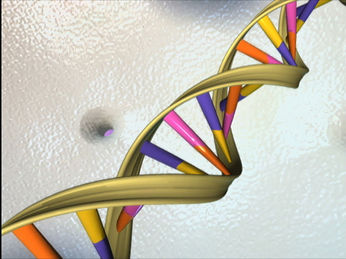Enhancing Human Embryos
February 25, 2016 • By Sarah Bianchi and Christopher Thomas Scott
In May of last year, human enhancement faced a new challenge. For the first time, Chinese researchers used a new technology called CRISPR/Cas9 to successfully change the genetic code of a non-viable human embryo. The technology’s potential applications are revolutionary. On the one hand, it holds the promise of treating genetic diseases such as Huntington’s and sickle-cell anemia by essentially changing the germline—the sex cells that pass genes from generation to generation—of an unborn embryo. Earlier versions of gene editing technology are already being used in non-embryonic somatic (body) cells in an attempt to treat HIV.
On the other hand, the new technology could lead to possible non-therapeutic enhancement of embryos for other traits like eye color, intelligence, or height. In contrast to previous methods, CRISPR/Cas 9 is cheaper, more powerful, and more precise. But at the moment, the technology is not fully developed. So-called off-target events, which introduce unintended genetic changes or incomplete editing, when some cells are edited and some are not, have been shown in laboratory experiments. These problems are not to be underestimated, because germline interventions will be passed down to all future generations. It is not clear at this juncture whether a germline change, once introduced, can be undone.
Against this uncertain background, the experiment sparked a heated debate and raised a number of vexing questions. Assuming the technology can be applied safely, was the experiment ethical? Do we have the right to intervene so deeply into human development? If we let laboratory or clinical research go forward, are so-called “designer babies” at the doorstep? How will we draw the line between “good” and “bad” forms of enhancement? Who draws that line?
Recently, we began a collaboration to bring together different disciplines–science, law, bioethics, and philosophy–to share perspectives on the ethics of germline editing technologies. Our first goal is to deepen the discussion on this controversial debate without limiting technology beforehand. This includes stressing the Enhancing Life Project’s second Big Question, which focuses on the “measurable ways” of human enhancement, or in this specific case, of embryo enhancement. We want to think through possible frameworks and tools that enable us to differentiate between useful applications of technologies like CRISPR/Cas9 and less useful—or perhaps even harmful—applications.
In doing so, a core question arises: Who is responsible for potential individuals such as the unborn, and what does enhancing life mean with respect to them? Chris’s project studies the ethical, legal, and broader social implications of emerging biotechnologies such as CRISPR/Cas9. Sarah’s project explores possibilities to better understand the relation between society and the individual, in this case the parents as responsible for their unborn children, without fixing human nature.
To help us think through the limits and applications of CRISPR/Cas9, Immanuel Kant’s exemplary ethic seems promising. Kant’s third formulation of the categorical imperative is: “Act in such a way that you treat humanity, whether in your own person or in that of another, always at the same time as an end and never merely as a means.” If we refer this imperative to our case of enhancing human embryos, then we can consider the parents’ universalization of their possible actions. To put it simply: The parents build a general standpoint from their subjective point of view. This sheds light on the social relation between parents and the unborn in a universal sense. Following Kant, parents should always act in such a universal way as if their later children could agree and as if other members of humankind could as well act in the same way. Through this possible universalization, Kant enables a means to uncover—and then avoid—selfish motives.
In the long run, we think that an interdisciplinary approach is needed to properly address these questions. As a first step, in February we engaged a number of domain experts in the science, ethics, law and policy of CRISPR/Cas9 at Stanford University. Examining the exemplary ethic in light of these different perspectives could be one means to define the possible limitations and promise of CRISPR/Cas9. This analysis could enable ethicists, policy-makers, and scientists to negotiate and set boundaries for the technology’s use, resulting in wide-ranging impacts for those that might eventually benefit from its application. Our next goal is to publish the results of this analysis in a highly-ranked, peer reviewed journal in the field of bioethics.
Photo via Wikimedia Commons.